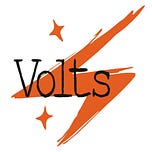There has been an epic battle over the past 20 years between two types of lithium-ion batteries: nickel manganese cobalt (NMC) and lithium iron phosphate (LFP). While NMC still boasts better energy density, LFP is making a major comeback thanks to its safer, more accessible materials and improving performance. However, China still dominates the LFP supply chain. In this episode, CEO Vivas Kumar of startup Mitra Chem weighs in on why America needs domestic production of LFP materials.
Text transcript:
David Roberts
For the last 20 years, two different kinds of lithium-ion batteries have been duking it out for supremacy: nickel manganese cobalt (NMC) and lithium iron phosphate (LFP). They both typically have anodes made of graphite; the difference is in the composition of the cathode.
In the 2010s, the conventional wisdom was that NMC, with its superior energy density, was ascendant, and that LFP was going to fade to niche status. But in the last five years, LFP has roared back and captured almost half the market, partly because it is composed of benign and easy-to-source materials (in sharp contrast to, say, cobalt). Analysts project enormous growth in the LFP market in coming years.
From the US perspective, LFP has two big remaining drawbacks. First, it still can’t match NMC’s energy density. Second, the production of LFP cells is almost entirely dominated by China. America needs better, home-grown LFP batteries.
That’s what the startup Mitra Chem is trying to provide. Co-founder and CEO Vivas Kumar spent a few years as the manager of Tesla’s battery supply chain, and a few more years with the supply-chain analysis firm Benchmark Mineral Intelligence, before launching Mitra Chem in 2021. We’re going to discuss why the US needs domestic LFP cathodes, the technical challenges to improving LFP performance, and the future of clean-energy materials science.
With no further ado, Vivas Kumar, welcome to Volts. Thank you so much for coming in.
Vivas Kumar
Thanks for having me, David. It's very, very nice to be here with your audience. I've been a big fan for a long time and, you know, the topics that you mentioned are topics that I've been thinking about day in and day out, even for years before starting Mitra Chem. So, happy to be here to talk about them.
David Roberts
Yeah, this is great. This is a subject I've been wanting to attack. I know maybe from my introduction it sounds a little technical, but I think people will be able to get the significance when we talk it through a little bit. So, LFP batteries, the cathodes are iron-based. Basically, they're made of iron and some other stuff. Maybe we could just start with a quick review of what are the advantages and disadvantages of LFP relative to what I think is still the market standard in NMC. Give us a quick comparison.
Vivas Kumar
When you're measuring battery performance, you're measuring how a battery cell performs according to multiple different criteria, such as energy density, cost, cycle life, safety. And for each different application, you're optimizing for different metrics. So, what a mass market electric vehicle on an American road is using is very different than what a two-wheeler in an urban environment in India, for example, is using. And that's kind of where we need to first start when we think about the battery industry. Lithium-ion batteries are a platform technology for energy storage, and they're used in a variety of applications.
For electrification, in automotive, in energy storage, in power, in defense, increasingly in new growth areas like aerial and marine applications as well. When you talk about, you know, the NMC and the LFP, those are the battery chemistries that have been most associated with mass-market electric vehicles. So if you look out your window, if you live in the United States, and I'm looking out of my window right now, I see, you know, four or five different western brands of electric vehicles, even in my own parking lot. Now, of course, I'm biased. I work at an EV supply chain company.
So, several of my team members and I went out and purchased EVs for ourselves. But it's pretty representative of what's happening in the United States right now. More and more people are choosing to go electric, and that's for a variety of reasons. Even for those who are not necessarily making the purchasing decision based on a desire to make an individual choice to reduce their climate footprint, they're choosing to buy EV because the cars just perform better. And as you said, the two chemistries that were most associated with mass market EV were LFP and NMC. In the west, generally, we tended to use NMC.
And the reason for that is that the automotive OEMs were optimizing to get the highest energy density possible, to get the longest range possible on the vehicle.
David Roberts
Right. That has to do with our kind of — I don't know if we made a decision — but sort of the collective decision made by automakers in the US to start EVs at the premium end, basically, to sort of introduce EVs as premium off the bat. And to do that, you need long range. And to get that, you need NMC batteries, basically.
Vivas Kumar
And this generally has happened with any technology. You go for the most expensive segment first, because you spend a lot of time and money doing the customization to get to a very small number of true fans who have the disposable income and the willingness to try a new technology product. And when you perfect the technology there, you shift towards a dual track of performance improvement while also pursuing cost reductions in parallel. And so that's where the NMC and LFP stories intersect. It is when we had a shift from premium vehicles being the segments that electrified most quickly in the United States. We went towards what is the right chemistry to help us get to those cost reductions so that mass market EVs can be made sustainably at an economic price point.
David Roberts
Is the shift from premium EVs to sort of mass market EVs the explanation for why LFP is coming back? Because I'm sure you remember, LFP was sort of like, gone. It was discussed as though it was already dead, and then it's completely reversed its fortunes. And I'm just curious, like, is that entirely explained by the shift in the kinds of vehicles batteries are being made for? Or was there some improvement in LFP batteries that explains why they sort of have come roaring back like they have?
Vivas Kumar
And David, it wasn't that long ago. So, back in early 2021, when we first founded Mitra Chem, and we went out to the market to tell Mitra Chem's story to get our first financing round done. The moment we said that we wanted to double down on a thesis of iron-rich cathodes, I think the majority of investors looked at us and basically said, "Okay, we'll see you later. Like, that's not going to work out in the west." And now we have a situation where all the growth is happening with LFP. So, why is that the case? Because of two things.
The first is the preference for a lower-cost cathode chemistry for mass-market EVs to hit their own margin targets. The second is the supply chains. So, nickel and cobalt supply chains are very complicated. There's a variety of geopolitical issues associated with these supply chains. And the scalability of these supply chains, as compared to the expected demand of EVs, doesn't necessarily intersect properly. And so, there's a case to be made: If there's not going to be enough nickel, if there's not going to be enough cobalt, if supply and demand are out of balance, and if the cost of nickel and cobalt are going to rise incrementally, that means that battery costs are increasing at the same time that EV makers are trying to make more affordable EV products.
Meanwhile, you have an alternative with LFP that's already a well-industrialized, well-proven chemistry, used at scale for over 20 years now in the Chinese electric vehicle industry, and is increasingly becoming the product of choice over the last five years here in North America. It's a safe chemistry with supply chains that scale.
David Roberts
But, has it substantially improved over time? Like, that's what I'm trying to get my mind around. It kind of seems like all the tech development improvements and performance I see end up coming from NMC. Like, has LFP — what I'm trying to grope at is, have the batteries themselves gotten better?
Vivas Kumar
So, battery cells and battery materials exist within an entire system, and performance is measured at the system level.
David Roberts
Right.
Vivas Kumar
So, to understand the value of LFP today, it's not simply just in the material level improvement, which has happened not at the same pace of NMC over the last ten years.
David Roberts
Right.
Vivas Kumar
And that's a consequence of Western battery supply chain players, South Korean battery supply chain players investing very, very heavily in R&D and innovation on improving the NMC's performance versus the impetus for LFP in China was to scale it up as quickly as possible and bring down the cost. Well, when you combine the material level improvements with cell engineering improvements, with the pack architecture improvements, what you get to is at the pack level, you have comparable performance.
David Roberts
Let's say it's comparable. It's not the same yet, right? I mean, there's still —
Vivas Kumar
It's not the same. But, I'm using the word "comparable" very carefully over here because your average buyer of an automotive product in the United States, like a middle-class American family where one or both parents have to commute 25 miles one way to work, do they actually care about having 350 miles on a single charge?
David Roberts
Well, maybe they shouldn't. I kind of think that they do.
Vivas Kumar
But the data is starting to show that there's a shift in attitude. So, when I first entered this industry, it's been almost a decade since I went into electric vehicles. When I first went to work at Tesla, the name of the game was range. It was American families are not going to purchase these vehicles unless you can show them that the once yearly trip that they take where, you know, they drive their kids to Disney or Seaworld or see grandma and grandpa, and it's a 400-mile drive. If they can't make that drive, then you can't convince them.
And now, it shifted to, okay, there's plenty of alternatives, and there's plenty of different options.
David Roberts
Yes, there are cost-conscious EV consumers. It's a little hilarious that it took the US so long to realize that.
Vivas Kumar
On a total cost of ownership basis, at an individual vehicle level, more and more, I think consumers in the American middle class are waking up to the fact that you don't actually need 400 miles on a single charge. That's a relatively over-engineered product for your daily driving, and a smaller battery pack, which just costs you less to buy but that fulfills your daily requirements, is perfectly sufficient.
David Roberts
Okay, well, we're going to return to the performance question later, but now I want to establish: The striking thing about LFP is that — I mean, I don't know how striking this is, I guess this is true of almost every clean energy technology and material — but it is striking that LFP is dominated, like 99% by China, like even more dominated by China than other clean tech is dominated by China. What is the explanation for that? Is it just a historical quirk? Is it just that they dumped money into it and we didn't? Is there a story to tell there?
Vivas Kumar
Well, so first, I want to say that I very, very much respect Chinese battery supply chain players for their ambition in scaling up technology very quickly. And I think that there's much the West can learn from observing this in my industry. One of the best examples of this is what they've done with LFP technology. So, the original patents for LFP were invented here in the United States and with a consortium of Western players. I don't want the US to take all the credit.
There were universities, research institutions, and well-funded corporate research groups in Canada and the European Union that contributed alongside scientists in the United States. Science is a team sport that crosses borders, and LFP development was done here. But the industrialization of LFP happened very quickly in China because, number one, the IP enforcement of the original LFP patents in China was minimal. And the second is the Chinese consumer from day one cared about cost as the number one metric for success. And so, instead of optimizing for higher energy density cathodes that could bring a higher price tag, the determination was made by the Chinese industry: "LFP is a scalable solution that works for the majority of our applications. Let's go and kill cost as much as possible by building as large a scale as possible."
David Roberts
That's such a familiar story. The sort of tech developed by the US or the US in partnership with other countries, and then we just let some other country do the next part, right, which is like scaling up. So, you know, I think one argument you could make and that some people do make is as follows: If the Chinese government wants to spend kajillions of dollars subsidizing LFP cells and making them cheaper, why shouldn't we just buy cheap Chinese LFP cells and use them in our cars? What is the argument for taking the time, effort, and money necessary to build a domestic supply chain for LFP cells?
Vivas Kumar
"Well, David, that's a very good question. So, first, let's look at the geopolitical context in which we exist today. The continuous increase in tension between China and the United States has led to a significant reawakening of the United States' approach to industrial policy. This has been most evident in the Biden administration through the Inflation Reduction Act, the Bipartisan Infrastructure Law, and the CHIPS Act, through the tariffs. I mean, we're seeing the use of policy, legislation, and government-directed funding to rebuild and reindustrialize the United States at a scale that we haven't seen for a couple of generations now."
David Roberts
Yes, the rebirth of industrial policy. We've done several podcasts on that very subject.
Vivas Kumar
What we saw during the COVID pandemic was that the fragility of supply chains, because of the integrated value of 40 plus years of decision-making to cause China to become the central manufacturing hub for so many of the products that we depend on, came back to bite us in the back. So, there is a case to be made that a geographic diversification effort that exists beyond the geopolitical tensions is very necessary. The second is that China, as a country, already is a large domestic market for many of the products that we're making. So, the consumption internally is already quite high.
50% of EVs this year, 50% of vehicles in China are EVs. 50%! They're doing a phenomenal job over there, but they're also getting to the point where they need to satisfy their own demand first. And of course, the argument back to me is going to be, "Well, they're also the number one leader in automotive exports right now," which I fully agree with. But protectionism in trade is going to ensure, as we've already seen in the current administration, that we're not going to live in a world where Western governments are going to completely accept 100% of their products in the battery supply chain and the automotive space and the energy storage space just coming from China. The lesson has been learned. Now, the next phase of this is, is LFP the winning chemistry in the long term? And if so, is the iron grip that China has in LFP something that we should be concerned about in the long term?
David Roberts
Or something that it is possible for us to break? You know, we should keep that in mind, too. It's not just like we could just decide to do this necessarily and do it. They have a lot of built-in advantages.
Vivas Kumar
The United States has always had a multilateral approach to alliances, for industry, for trade, and for defense and security. China is no longer a low-cost manufacturing country. Okay, let me repeat that, because it's a very, very important insight. China is not a low-cost manufacturing country. China is a country with a very large, vibrant, and strong labor force that has significant embedded knowledge, institutions, and infrastructure for manufacturing. But the lowest cost manufacturing happens in countries that are now turning their attention to doing higher value-add manufacturing themselves there as well. So this is all of your Southeast Asian nations, for example, right?
This is increasingly Mexico and wanted to take advantage of USMCA. This is even Eastern Europe, for example. Eastern European economies are booming in their growth as compared to where they were even ten years ago at this point. So, the long-term trend is for any buyer to take advantage of the best economic value based on a certain performance threshold. If you can make a product for x in China and somebody else learns to make it at 10% less than x in Thailand, but with the same performance, they're gonna want to go take advantage of the product that they can get from Thailand, for example.
So, I think that the geographic diversification play of the battery supply chain moving away from China is not necessarily just the United States building capacity over here. I think that it's the multilateral alliances on which the US defense and security pact globally is built, and bringing along some of those allies who are very ambitious in developing high-value manufacturing in their own countries along in the journey. Now, what they get from participating in the American battery supply chain is that they get to diversify their own risk base by not just selling their products into China, which once again, is a domestic market that's highly saturated at every single step in the battery supply chain anyway.
David Roberts
So, another aspect of this is not just the sort of geopolitical security that comes with diversifying a little bit away from China, but of course, we now have this law on the books, the Inflation Reduction Act, which has these EV tax credits in it, which are tied to domestic materials or materials from friendly nations. So, say a little bit about what is required for an EV with an LFP battery to get the IRA subsidies. Is it enough, like, if you start making the LFP cells, is that enough? Or is it the materials and the cells and the packs and the batteries and the cars? Like, where do you, where are you sitting in that sort of consideration?
Vivas Kumar
Okay, so two things. First, Mitra Chem makes battery materials. We sell our battery materials to battery cell makers.
David Roberts
Ah, right, yes, I got confused about that briefly.
Vivas Kumar
There are multiple passages in the Inflation Reduction Act that are applicable to the battery supply chain. For the sake of the viewership and the audience of this podcast, I'm going to give just one example, and by the way, just for context for everyone, we're recording this podcast in mid-August of 2024. There's a presidential election going on right now. And of course, some of this is subject to change because no matter who ends up winning, we're going to have a new president now. And even if it does end up being VP Harris, she has not been shy to say that there are certain policy positions in which she is opposed to policies passed under President Biden, or in which she wants to morph policy.
So, there will be a new president, which means that there will be policy changes. For the sake of this audience, let's just dive into one of those, which is a $7,500 tax credit for purchasing consumer vehicles. So, the $7,500 is split into two parts. The first is on domestic battery cell manufacturing. So, if you have a US-manufactured battery cell, you qualify for $3,750 out of the $7,500. The second is on the materials that are used in the battery cells manufacturing process. And there is a ratcheting increase in percentage that is required for domestic content to qualify for that additional $3,750 for the materials.
So, how do we help our customers if we manufacture our materials, the critical materials, in an Inflation Reduction Act compliant manner? Which means you either manufacture in the United States or you manufacture in a country that has a free trade agreement with the United States.
David Roberts
Like that body of countries has that been settled? Now, have they set policy for exactly who qualifies as a friendly country? Because I thought there was some ambiguity about the exact definition of what's required to be qualified as a friendly country.
Vivas Kumar
As of today, the current interpretation of the law is if you have a free trade agreement signed with the United States.
David Roberts
Got it.
Vivas Kumar
So, go on Google, go on ChatGPT, and search "US free trade agreement countries." There's a list of somewhere between, I think it's like 19 or 20 countries.
David Roberts
I guess the relevant question is, does that list include some of these other South Asian countries that you're referring to that are now chomping at the bit to compete with China?
Vivas Kumar
The most notable country on this list, which is the country in which Mitra Chem has made the most investments outside of the United States, is South Korea.
David Roberts
Right.
Vivas Kumar
South Korea has a well-established and dominant industrial base in the battery supply chain, a highly motivated workforce, a 70-plus year trade history with the United States. It's a strong defense ally of the US. It's got efficient capital markets, and three of the five world's largest battery cell players are based in South Korea: Samsung, SK, and LG.
David Roberts
Your first factory is also in South Korea, is it not?
Vivas Kumar
So, we are working on a JV for production with a local partner in South Korea, for which we'll be publicizing some news very soon, before the end of this year.
David Roberts
I'm sorry, what is a JV? What does that mean?
Vivas Kumar
Oh, a JV is a joint venture. So, instead of building the facility by ourselves, we have a local manufacturing partner with whom we're going to build.
David Roberts
Got it.
Vivas Kumar
And the reason that we're doing that is we are a very proudly American company with a global view. We believe that electrification is important for all markets to happen, but we also know our limitations. 90% of our workforce sits here in the United States. The entire executive team sits here in the United States. We're not going to sit here and claim that we know what it takes to get a manufacturing facility in South Korea built. Versus, we have a great local partner who has done business there for decades at this point, and they're looking for a new product thesis and an opportunity to expand into the battery supply chain, which we bring.
David Roberts
So, you'll be making LFP materials there and handing them off to cell makers there, and then the cells will eventually make their way to the US. Is that the idea?
Vivas Kumar
That's right. Our goal in general with our manufacturing footprint is to think beyond building in the United States and to think about building Inflation Reduction Act-compliant as our first step. But then, as a second step, the larger goal of this company is to be an enabler for electrification worldwide. Climate change is an issue that affects everybody in the world. So, if we were to just build battery materials in the United States, for the United States, by the United States, we're only getting at a fraction of the problem that matters. And as we see more and more battery cell proliferation as a platform energy storage technology around the world, as we see more EVs on more roads, as we see more batteries being paired with solar and wind, we want to be part of that solution worldwide.
So, go step by step. First, focus on US, IRA, and do that with a manufacturing network that has a footprint across South Korea and the United States, but then think of a global mandate after that as well.
David Roberts
Well, let's talk about the materials then. One of the premises here is that LFP performance has been pretty static, just in terms of the composition of the cathode and the energy density you can get out of it. It's been pretty static. And you think there's room for improvement there. So talk a little bit about how you're set up to research and improve these LFP materials, because as I understand it, there's machine learning involved. I guess everybody's got machine learning involved now, but there's some sort of AI going on somewhere behind the scenes here.
Tell us how you research and develop these materials. Am I right in saying that there just hasn't been a lot of movement or development in these materials, weirdly, over the last decade, even as LFP has boomed?
Vivas Kumar
The core thesis of this company was to combine an accelerated R&D advantage alongside a product thesis that's relevant to the market. So, we've talked at length about the latter half, which is an iron-rich cathode active material thesis for electrification, primarily in the IRA market first. But, LFP is not the be-all, end-all chemistry. And, if all we did was make the best LFP possible in the world, we're not going to survive for decades as a company.
David Roberts
Are there limitations in terms of the existing chemistry of LFP? Is there just like —
Vivas Kumar
Yes, there's a physics-based limitation for how much more you can improve energy density. And that's the reason why we looked not at LFP, but at the portfolio of iron-rich cathode active materials.
David Roberts
Ah, this is what I want to talk about, because I kept seeing the term LMFP, but I didn't see it defined anywhere. So what, what is the pathway to improving these LFP materials and what other chemicals you bringing in? Like, tell us a little bit about improving the product.
Vivas Kumar
Absolutely. LMFP stands for lithium, manganese, iron phosphate.
David Roberts
Ah, you're bringing the manganese back. Interesting.
Vivas Kumar
So, to simplify it quite a bit, you substitute some of the iron for some manganese. What that results in is what you call a dual voltage curve. As you have a dual voltage curve, you also have the integrated value of the voltage curve that translates to energy density is greater. So, with an LMFP cathode, you get to bridge the divide of material level, energy density between LFP and NMC. Now, remember, it's about how you integrate into a larger system.
David Roberts
Sure.
Vivas Kumar
So, if you can get material level improvements in the jump from LFP to LMFP, you also get improvements at the cell level and then ultimately the pack level. Then, you can get a 10% to 15% improvement in the total range of the vehicle, even with that switch from LFP to LMFP.
David Roberts
Manganese, in terms of these materials issues that, like cobalt, has. Where's manganese on that kind of scale? Is manganese relatively benign or easy to find, or —
Vivas Kumar
By no means am I suggesting that any mined material supply chain is easy. But what I will say is it is easier to source than a cobalt supply chain. I'm not going to sugarcoat it. Finding applicable manganese, that's Inflation Reduction Act compliant, is not simple. The real innovation for Mitra Chem, bringing LMFP to market at large scale, is not simply our ability to come up with an LMFP product that can perform at a battery cell level. It's also bringing a supply chain solution to the table when we speak to customers.
David Roberts
Right. Are you dealing with manganese miners now, or are you working directly in the manganese supply chain to try to secure that?
Vivas Kumar
Yes, it's my personal experience of having been a buyer back in the day at Tesla before I started this company, that an understanding of the supply chain all the way upstream from mining, all the way through the automotive OEMs, is just a responsible way to do business here. So, you understand where are the trends , you understand where are the shortages , you understand how technology is evolving.
David Roberts
This is one of Tesla's great advantages. One of the stories for why Tesla is so ascendant is because it is vertically integrated, including all the way down to the chargers, even.
Vivas Kumar
I played a very, very small role in this, but it had a huge impact on me in terms of understanding how a supply chain works all the way from cradle to grave. And coming back to your question about us and manganese, we don't view manganese players as our suppliers. Given the criticality of this material in terms of the Inflation Reduction Act, we view manganese players as important technology and strategic partners of ours. We need to understand not only their capacity but their specifications and how they're thinking about improving their specifications so that we understand how to integrate that product into our own technology roadmap. So, when we go and present to a customer, "Here's where we believe our LMFP will be in three years or in five years," it doesn't just reflect our internal R&D capability, it also reflects the reality of the supply chain in which we operate.
David Roberts
Just a kind of a side question, but this LMFP material, as opposed to the LFP material, can you feed it into the same cell making process, or are the cell makers going to have to change something to accommodate this new material? Or does it just slipstream into existing manufacturing?
Vivas Kumar
Battery cells are a complicated system. Anytime you make a change, you have to evaluate the change based on its impact on the entire system. This isn't just as simple as take out LFP, put in LMFP, everything else stays constant, and everything will be fine. There will be some other changes to optimize. However, what I can say is the interest in improving energy density means that the investment in integrating LMFP into the battery cell is well worth taking for cell players with whom we work.
David Roberts
Did you do a lot of R&D to settle on manganese? And are there other minerals or metals that you can imagine using to boost the energy density of LFP?
Vivas Kumar
We have a three-pronged product approach within the iron-rich cathode space. The first is LFP, the second is LMFP, and the final is a product that we call LMX. Now, we're not speaking too publicly about LMX yet, because it's still at the R&D stages, but what I can say is it's an iron-rich cathode that uses materials that have established scaled supply chains and that can even outperform LMFP in the long term. How we came up with this product thesis is frankly just based on customer feedback. Customers said to us, "We love LFP today, but we'd love to have something even better than LFP.
And by the way, we'd love to have an iron-rich cathode that works even for our premium vehicles, so that we can get the performance that's desired by somebody who's willing to pay $125,000 for a single car without the supply chain inconveniences that result from nickel and cobalt."
David Roberts
That's the sweet spot. That's where everybody wants to get.
Vivas Kumar
And we can certainly get there. We've already proven at the R&D scale, which is the first step, that we can get to a product that works. Next, we need to figure out, can we get the product to scale with existing manufacturing equipment in the world? The one risk that we've taken off the plate is the supply chain risk, because we come at this from a very, very practical approach. If you are trying to scale up a new product and it is dependent on a supply chain that already has not scaled, you have to simultaneously face two different scale-up challenges at the same time.
This sounds exactly like what NMC players are dealing with when it comes to the nickel and cobalt supply chains.
David Roberts
Yeah, yeah, I think about the cobalt supply chain, like, whatever, 5-10 years ago. I mean, these are literally just like family mines, and it's just a low volume business. Not a lot of standardization, not a lot of sort of, like, rule of law is fitfully applied. It just was not ready, you know, like. And so, the cobalt supply chain is scrambling to scale up and professionalize even as the batteries are scaling up. It's a very, very tricky thing they're doing. So, you're not worried about manganese then scaling up and there's not —
Vivas Kumar
I wouldn't say that I'm not worried.
David Roberts
I mean, obviously, you're worried.
Vivas Kumar
Because I'm always worried about my supply chain, what I can say is that I believe, as compared to many of the other materials that we evaluated, there is a path for manganese to be scalable. And I can focus on product development as the primary way in which we spend the brainpower of the wonderful team that we have here at Mitra Chem.
David Roberts
And that's LMFP product development. And then beyond. What was the other one? LMX?
Vivas Kumar
LMX.
David Roberts
Because I thought the FP was the iron. So if it's iron-rich, you gotta. Don't you have to have the FP in there or the F?
Vivas Kumar
Well, the F is certainly in there, but we haven't come up with a full chemical formula that we're willing to give out to the world yet. So, we decided to do the easy thing and just call it LMX.
David Roberts
Yes, X is also very cool and suggestive these days, as we know. So, in your mind, is there a world in which there is a variant on LFP chemistry that matches NMC performance? Like, in theory, is there one? And then, beyond that, do you have a line of sight to one?
Vivas Kumar
Can I flip the question around? What is the best way to invest around getting LFP to match NMC performance? I don't think it's necessarily material optimization alone. You do have to worry about cell level optimization, which involves not just getting the best cathode possible, but also getting the best anode possible, getting the best electrolyte possible, the entire mixing of the cell system to optimize for energy density without compromising safety, and without running your costs up like crazy. And then you pair that with pack-level engineering as well. So, it's a full systems approach.
David Roberts
I mean, you're just playing in the materials part of that.
Vivas Kumar
Mitra Chem is a materials company. The primary product that we'll sell to our customers is going to be a battery material.
But for us to be able to compete on a global stage, we also need to understand the context in which we exist. So, we do make battery cells here at our research lab in Mountain View, California. We do work with pack integrators to understand how they would integrate those cells into those packs. Not necessarily because we want to do R&D and improve those processes ourselves. We trust our counterparty to do that, but we just want to know what's happening downstream of us so that we have it in our minds when we think about the material level improvements that we're going to make as well.
And this kind of goes back to your whole question around, "How are we employing machine learning?" Our lab in Mountain View does all of the different steps needed to get a battery materials product from lab to market, from battery material synthesis to powder level metrology to cell building in both coin and pouch cells, and then ultimately doing accelerated lifetime forecasting through cycle testing. We do it all under one roof, and there's one ML layer that we have built that sits on top of the lab to continuously ingest the data streams from the various pieces of equipment that we have in the lab and through their open API access that we've negotiated directly with the vendors of that equipment to dynamically determine which are the experiments with the highest value and prioritizing our scarce resources only for those experiments.
David Roberts
These are just about improving the performance of the material, right? I mean, that's trying to imagine what the experiments are, what the R&D — I mean, if you're just mixing iron and manganese, how much R&D is there to do? I'm sorry, this is probably an outrageous question. I'm sure there's all sorts of scientific details, but I guess I just would like a little bit better of a sense of like, I'm just picturing these powders. Are you just making different powders with different recipes? Is that what you're experimenting on?
Vivas Kumar
Let's say you're cooking a casserole and you want to get the perfect casserole. So, one day you try no salt, then you try a little bit of salt, then you try a little bit more salt. One day you try broccoli, and then you try asparagus, and then you try squash. You let it sit in the oven for 20 minutes, and then 25 minutes, and then 30 minutes. You change the temperature of the oven. You change how long you let it sit out before you eat it. You change the portion sizes. So, you go from cooking for two people in your family to cooking for six people in your family, and you try to figure out what are the best ingredients, what's the best temperature, what's the best portion size, what's the best timing, what's the best way to season it so you can get to the best possible casserole?
That's what we're doing. We're optimizing multiple different process parameters on our equipment, along with the different potential concentrations of the materials as they get mixed into making a cathode, along with different suppliers with materials where specs are just a little bit different from each other, all in the quest to get the best performing material possible based on what the customer gives us as their standard metric for success.
David Roberts
Right. Well, this raises another question, which is, I think, probably average people are just sort of thinking, "Well, you make the best LFP material you can," but as you keep emphasizing — and I think this is going to become more clear in coming years to people — there are lots of different things to do with batteries and you need lots of different performance profiles depending on what you're trying to do. So it may be that, like the best material for one kind of thing is not the best material for another thing. So, are you currently sort of custom designing materials based on performance metrics that your customers give you?
Vivas Kumar
What we care about is designing materials for the largest and fastest-growing segments. If we get into very niche spaces, it's certainly a noble goal, but it's not necessary. And it also isn't the foundation upon which you can build a large cash flow-sustaining company. So we're currently primarily focused on mass-market EV, medium-duty trucking, grid-scale energy storage, and some specific power applications in the defense markets.
David Roberts
Oh, interesting. You just chose these because of the scale of the market, just the quantity.
Vivas Kumar
The scale of the market, and also the customer hunger for a solution, and their willingness to collaborate with us to integrate our product into their system.
David Roberts
And so, the LFP material that you would make for an EV is presumably different than the LFP material you would make for stationary storage. Yes? Those are just like two different powders?
Vivas Kumar
You are hitting the nail on the head. So, today, when somebody buys an LFP, they have two or three different specs as options that they can buy, and they're choosing the material that most complies with what they need in their application. Now, the ultimate goal that you want to get to is a mass market EV in Texas has a very different cathode than a mass market EV in northern Norway, because the temperature conditions are very different. Right.
David Roberts
So, you really want to hone in, then? You really want to, you really want to cut these things with a fine — I don't even know what the right metaphor is, but, like, you really want a custom design.
Vivas Kumar
But the bang for buck and that level of customization is not there.
David Roberts
Right.
Vivas Kumar
So, we stay one level higher than that, which is, let's get an appropriate chemistry for the mass market EV, and then let's move on to doing an appropriate chemistry for grid-scale energy storage.
David Roberts
But, you can imagine, with some scale, bringing costs down, improving manufacturing, improving R&D. You can imagine, I'm sure, three, five years down the road, this industry reaching a point where it can start to crank out these customized, more customized materials, yes?
Vivas Kumar
Yes, we can. And that right there is also the future of material science. Where Mitra Chem wants to go is not necessarily to be just a battery materials company, but to be a company that pushes the frontier of material science through our accelerated R&D advantage and through accelerated lab to scale. Battery materials is simply the starting point, because it's a large and accessible market that corresponds to the experiences of the original team that founded this company. But we see that if we can prove our thesis here with battery materials, then there's so many other vectors of material science, whether it be decarbonization materials or basic materials like steel and aluminum, where the same approach can be applied to come up with better performing materials according to the metrics that customers care about.
David Roberts
By approach, you mean this sort of rapid experimentation, machine learning, honing, rapid. Sort of like prototyping, this kind of thing?
Vivas Kumar
Yes, a faster, iterative approach to get to cheaper and better materials that can scale at a fraction of the cost in time.
David Roberts
Right. Before I talk about possible future materials, which I would like to hear a little bit more about, I just want to return to the previous question and rephrase it. Can you imagine a future, a relatively near future, in which LFP vehicles are performing as well as NMC vehicles based on the entire holistic better materials, better cells, better packs, whatever? Can you imagine a world in which that performance differential disappears?
Vivas Kumar
I can imagine a world in which an iron-rich cathode eliminates the performance differential.
David Roberts
Yes, that's what I'm after.
Vivas Kumar
LFP is highly specific, but we are looking at the entire category of iron-rich cathodes for this reason.
David Roberts
Got it. So, an iron-rich cathode matching the performance of an NMC is imaginable.
Vivas Kumar
Exactly right.
David Roberts
And then, just to, you know, I think we mentioned this already, but just to remind listeners, what's the point is that then you're no longer trying to jam together a giant global nickel and cobalt supply chain, which right now are mined in, you know, not great places under not great conditions. Lots of sort of ethical and just practical problems with those supply chains. Whereas here, iron is not hard to find. Manganese might be tricky for you, but the supply chains are going to be much more benign if we can make this shift. I just want to remind everyone of why we're talking about this at all.
One thing that sort of stuck in my mind, or that I was chewing over a little bit, reading about you guys, is it seems like materials R&D is one thing. Mass manufacturing and production of battery materials is kind of a separate thing. Those are two separate, you know, they have different dynamics, different business dynamics. And you're, you know, I've talked to a lot of companies who are just like, "We're the R&D people, we're going to figure this out, sell the IP to a big company that knows how to do mass manufacturing." It seems like you are trying to get into mass manufacturing of these materials in the US.
Do you worry at all that that's like you're like making your challenge twice as hard by taking both those things on at once?
Vivas Kumar
Let's clarify. We want to get our products manufactured at scale, but we don't intend to be a sole manufacturer. We intend to work with manufacturing partners. One of the reasons why we're not going to adopt a business model of just being an IP powerhouse, where we license out IP to somebody else to go and scale it up, is because the tight integration and feedback loop between process decisions made at scale, feeding back into R&D decision making, is something that gets left behind by businesses that optimize for licensing only.
David Roberts
I see.
Vivas Kumar
And actually, on this note, let's take a look outside of our industry. Let's take a look at semiconductors. We've got Nvidia and TSMC, who have had a nearly 30-year partnership right now to manufacture semiconductors at scale. The two teams from the two companies are so tightly integrated that TSMC may not be designing the chips and Nvidia may not be manufacturing the chips, but they both understand how to work together to increase the overall equipment efficiency, to improve yield, and how to better capture cost opportunities on the manufacturing line, on how to better stage gate new CapEx investments, on how to time the market to bring certain new designs to intercept with customer demand.
And that's the kind of partnership that I envision as Mitra Chem goes forward.
David Roberts
So, that's kind of a middle way in between pure R&D and being the sole manufacturer.
Vivas Kumar
Mitra Chem, I'll tell you unashamedly, we don't have a multi-decade history of manufacturing anything ourselves as a corporate entity, but we are working with partners who do.
David Roberts
Right. And so, I forgot to ask this, but like, are you currently producing LFP materials that are being sold into commercial LFP vehicles? Like, are you up and running as a commercial venture?
Vivas Kumar
Well, what we are doing today is that we are doing multi-ton pilot scale sample runs of our best-in-class LFP product, which we have sent out dozens of samples to your brand-name battery, cell, and automotive OEM manufacturers throughout the non-China world. And there is an iterative process to get accepted into the supply chain for one of these companies.
Multiple samples, deep integration between the technical teams, and discussions about future product roadmap. We've been having those discussions now for about three years, and making it to multi-ton pilot scale sampling was a very important step for us. And so, this is the launching point alongside our manufacturing partnerships to get to true commercialization of our products and then ultimately revenue and cash flow generation.
David Roberts
Right? So, you're banging on — what's the right metaphor here? Like, these manufacturers want non-China made LFP materials, right? So, it's like, in some sense, you're pushing on an open door here. Like they want, in some sense, they want what you're selling.
Vivas Kumar
Yeah, they want the geographic diversification. They don't want a sole source from China as a result of the increasing geopolitical tension, but also to remove the risk nodes of their supply chain. Please remember, going back to the end of 2019 and 2020, China shut down because of COVID three to four months before the West did. Supply chain disruptions hit the West even before the pandemic actually hit the West.
David Roberts
Yeah, it's one thing to push China's dominance of LFP cells — I mean, just to pick this as an example of a thing they dominate — I mean, LFP materials from like 99% where I think they are now, to like 95% or 90%, but like, pushing it down to 50% or lower seems like a very different thing. How much? This is another unanswerable question, really. But like, how much, like, what's the right number there where you feel safer about these geopolitical risks? Do you know what I mean? Like, you're not going to. It's one thing to get a little piece of the manufacturing.
It's another thing entirely. These are very big businesses. It's another thing entirely to take a big chunk away. Like, how much do you want to take away from China before we feel good?
Vivas Kumar
Let's be realistic. These types of supply chain evolutions take well over a decade to accomplish. And there's not a simple answer because of the dynamism of geopolitics.
David Roberts
Yeah, yeah.
Vivas Kumar
What I can say, however, is the current status quo is unsustainable.
David Roberts
Clear enough. Even if, just like us, consumers want to buy some LFP vehicles at some point in the next five years, I mean, that alone, you're going to have to find a material supplier outside of China if you want your EV tax credit. Okay, final question. You say you're starting with the best possible LFP materials. Then you're moving into LMFP, which is like LFP plus a 10% to 15% boost. Then you're getting into LMX, this mysterious post-LMFP chemistry, which is going to boost another boost, presumably. Do you have designs to move beyond battery materials?
Just how, how sort of, um, Catholic is this, um, R&D process you have? Like, are you going to move into entirely other categories of materials, or do you have a roadmap yet?
Vivas Kumar
The opportunity space for material science innovation is in the trillions of dollars.
David Roberts
It's huge. I mean, just around clean energy, it's huge. I've become semi-obsessed with this subject lately, but, like, there's so much to be done.
Vivas Kumar
Take the Inflation Reduction Act: We just touched in the last hour on a very specific segment of the Inflation Reduction Act, which is cathode active material for lithium-ion batteries to hasten clean energy in automotive and energy storage. That's so specific. That's one of, I don't know, dozens of opportunity spaces that the Inflation Reduction Act chose to target with subsidies. So, the opportunity space for us outside of batteries is also massive, but also, we're approaching this problem with humility.
David Roberts
Yeah, I was going to say it can be so massive that it can, like, stun you into inaction almost.
Vivas Kumar
What we're doing right now is doubling down on one opportunity space, which we understand, which is large, is growing, and we want to do it right and do it well before we expand to something else.
David Roberts
You see yourself sort of scaling up and becoming comfortable and secure as a company before you go beyond batteries.
Vivas Kumar
The best companies that have built the longest-term industrial track records were ones who chose to double down on perfecting one product and getting it out to the world, and generating cash flow first before they started making investments in adjacent areas.
David Roberts
Yeah.
Vivas Kumar
So, we want to do battery materials, right? We want to get it out to the world. We want to serve the customers who are working with us side by side today, and then go sit down with them and figure out, "Hey, what are the other opportunity areas that you're looking at that we can help you ?"
David Roberts
So, you don't have, like, a roadmap now of the order you're going to proceed through materials. That's going to be in some sense responsive to dynamic market demand.
Vivas Kumar
When the time comes, we're going to sit down with our customers and figure out what are their material science needs . But specifically, where are the best cost optimization and supply chain optimization opportunities, and help them with that? We don't today have an explicit long-term roadmap beyond battery materials, other than having an ambition to build a multi-generational company that goes and targets decarbonization materials and material science innovation at scale.
David Roberts
Right. Putting aside Mitra Chem, then putting aside practical considerations, business considerations, just in your sort of, like, imagination and your understanding of the clean energy landscape, what other materials challenge do you just find sort of, like, exciting and big and full of potential? Is there a particular other area of materials development that you just, you know, aside from your personal company that you're running, just find interesting and intriguing in?
Vivas Kumar
In every mode of transportation possible, you know, what's just as good as increasing energy density in your energy storage source? It light-weighting the materials used in the mode of energy transportation.
David Roberts
Indeed.
Vivas Kumar
So that you decrease the need for that energy density in the first place. So, the symbiosis between light-weighting materials and increasing energy density for storage is something that I would love to explore as our next product thesis whenever we can get there.
David Roberts
Interesting, interesting. Yeah, yeah. I've always wondered, you know, because we've been reading about these graphene or whatever, these carbon fiber — that talk has been around forever, but it remains really prohibitively expensive. And I sort of have been wondering, where are all the material scientists here who are going to make super cheap carbon fiber?
Vivas Kumar
And this is another place where we'll approach it with humility. And I'll say that Mitra Chem is not the only material science company in the world. Sure, we understand the ecosystem in which we operate. We're happy that there are other players popping up around us with product theses of their own. And climate science, climate change, material science, innovation. These are big topics impacting billions of people. So, kudos to the rest of my peer companies going after these spaces as well.
David Roberts
Yeah, as you say, the space of opportunity is almost unlimited. Well, Vivas, thank you so much for coming on. It's super interesting getting into some of these details of the batteries, and I've been wondering how this sort of NMC/LFP race is going to play out, and you sort of set a marker here. So, thanks for coming on.
Vivas Kumar
Well, David, thank you very much for having me. And for any of the viewers who want to learn more about us, you can go to mitrachem.com or you can find me on LinkedIn.
David Roberts
Thanks, Vivas.
Vivas Kumar
Thank you, David.
David Roberts
Thank you for listening to Volts. It takes a village to make this podcast work. Shout out, especially to my super producer, Kyle McDonald, who makes my guests and I sound smart every week. And it is all supported entirely by listeners like you. So, if you value conversations like this, please consider joining our community of paid subscribers at volts.wtf. Or, leaving a nice review, or telling a friend about Volts, or all three. Thanks so much and I'll see you next time.
















Share this post